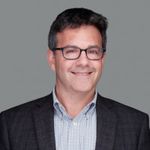Marketing Teams Need to Follow a Master Chef's Leadership Recipes

Before I joined the Oracle Marketing Cloud, I spent a week with the Content and Social team during their off-site meeting in Raleigh, North Carolina. I was lucky enough to not just spend time working with my new team, but I also had to chance to socialize with them. And that seemed to revolve around a lot of food.
We had one special meal where we sat at the chef's table at Second Empire. The chef's table is a private table in the kitchen that is overseen by the head chef. Each course of the pre-planned meal was described to us by the chef himself after the food was placed in front of us.
The kitchen at a high-end restaurant is a precise operation that is a great example of team dynamics. No matter what part of an organization you are in, there are lessons to be learned from watching this team in action.
1. The Leader Sets the Strategy
A leader of an organization leads by planning the strategy, setting the direction of the team and creating the vision. A head chef plans the menu, makes sure the ingredients are ordered, hires the people and makes sure everything is in place to run smoothly. While the chef may oversee the kitchen line, if he has done his job, it all just works. His physical position in the kitchen is on the side of the line where the plates come out, not on the line. He is there to inspire confidence in his team and his presence conveys one of trust in them. He can also solve big problems if they arise, but that is a secondary role. A true leader understands his role and expects that each team member does the same.
2. The Team Leader Runs the Team
The manager or leader of a team is the one who makes sure the work gets done properly. He translates the vision of the leader into actionable steps that his team can take. The head line chef is the only one who communicates with the chef. He receives every order and makes sure the cooks know what to do with every order. He makes sure they have the tools needed and the ingredients required to complete every task. Any issues related to a single dish are solved behind the line by the team leader. A team cannot succeed without a strong, decisive leader of the team.
3. Succeed with Process and Repetition
Efficiency on a team is based on having a defined process that works over and over. If every time you needed to do something, you had to figure out how to get it done, you would never get it done. You would keep spending all your time figuring out how to get it done. A restaurant kitchen is even more tied to process and repetition. A prolific marketer may write one blog post a week (or even every day) and they know the steps to take to get it done. Restaurants serve hundreds of plates every night. That would never happen without the whole team knowing their role in the process, from prep to cooking to plating.
4. Timing is Everything
Each dish has to be cooked and plated perfectly every time. But those plates must be coordinated with the food of others sitting at the same table. This is one of the biggest challenges of restaurant kitchens that regular people cannot master. When cooking dinner at home we can't even time our broccoli, which only has to cook five minutes in the microwave, to finish at the same time as the main dish. We often think of linear processes, but more and more often we are required to manage multiple activities with coordinated finishes. When different team members are responsible for different elements of a project, both the process and the leader keep the project on track. If that landing page isn't live when your email goes out, there is nothing for your customers and prospects to click to. That does not help your conversion rate. All elements must be scheduled to be completed at the right time for the overall process.
5. Presentation is Important,
But Taste is More Important
Every plate coming out of the kitchen is a layered masterpiece. Multiple ingredients are stacked on colorful swirls of sauce, which make a very appealing presentation to our eyes. No matter how pretty the plate is, the food still needs to taste amazing. Or at least very good. The plating techniques set an expectation of flavor that the food must pay off. This is just like creating content that pays off readers' expectations. You earn trust by following through with flavor, or valuable content.
6. Don't Touch the Ramekin. It's Hot!
Human nature is a funny thing. Just because someone tells us something, we don't always believe it. We have to prove it to ourselves. Whenever a hot plate is put in front of us, or in this case a very small bowl with scalloped edges called a ramekin, and a server tells us that it is hot, we still have to touch it ourselves just to be sure. Maybe it cooled on the way from the kitchen. In our case, we were eating in the kitchen, so it did not have time to cool. When working as part of a team and someone tells you something about an ongoing project, you do not have to check behind them to make sure they are telling you the truth. Accept what they have said and go on to the next course, or task.

My new team posing with the chef
This post originally appeared on the Oracle Marketing Cloud blog.
